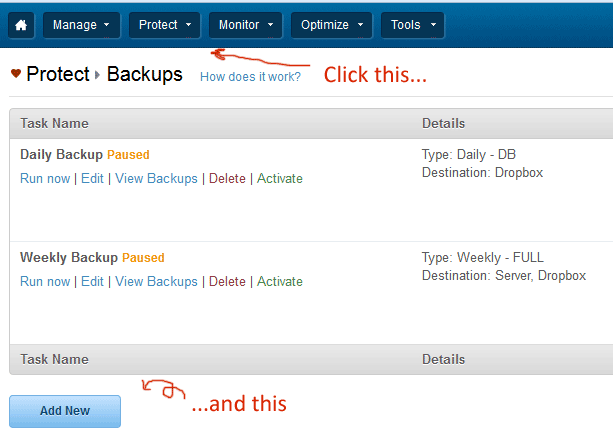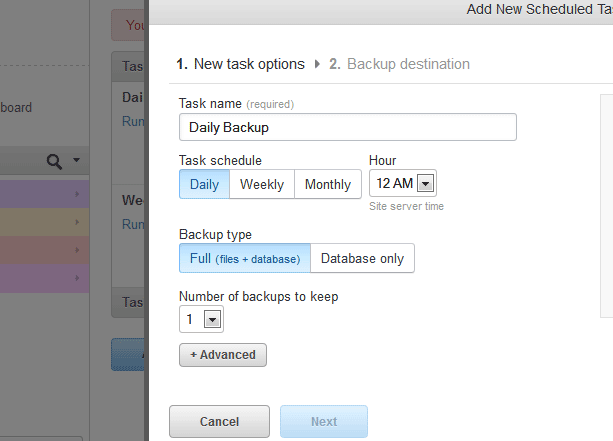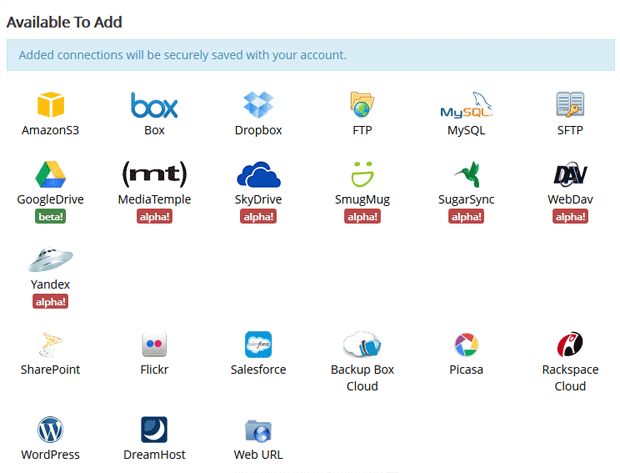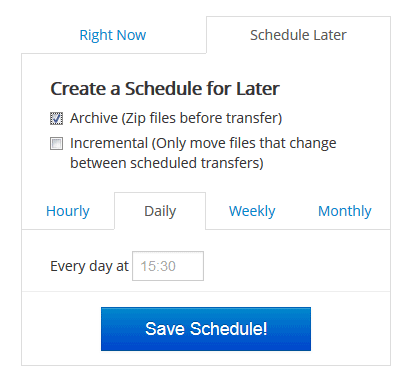Tools and Services
How to Automatically Backup Your WordPress Website
25th March 2013Okay guys, let’s admit it – most of us don’t backup our website. It’s tedious and if you are not familiar with server management, you end up scratching your head. Is there a better way – like, automatic backup or something? Actually, the answer is yes, but that does need you to do some things first.
First thing first: Why I need to backup my websites?
Because chances are, your server can get hacked and your data can get stolen. Furthermore, backing up your websites will also avoid you from data loss or non-functioning websites due to human errors. Backing up your data gives you the sense of security, knowing that you will be able to restore the backup anytime when things go wrong.
What kind of website need backing up? ANY KINDS. This blog post will specifically let you know how to auto-backup your WordPress-powered website. But one of 2 methods I present in this blog post can actually be applied to any kind of websites.
What to backup for my WP site?
There are basically 2 things you need to backup: Files and database.
If you are a techie, then it’s not a big problem – just copy all the files and export database – that’s all. But what about non-techies? It’s not easy.
When you own many websites, you might want to automate things. Why? Because it’s time consuming! And you need to backup on regular basis – I recommend files every week and database everyday. 2 or 3 sites are manageable, but how about 10? 20?
You need a tool (or tools) to make it happen. No worries, we’ll get to it – read on…
Where to backup?
Many create local copies stored on physical storage devices – USBs, CDs and hard drives. But I recommend you store your backup in the cloud? Why? It’s a long story, but to make a long story short, it’s because the security cloud storage offers: Things can go wrong with your, say, laptop – stolen, broken, etc.
With cloud storage, although still not 100% secure, it’s stored on numerous servers automatically interconnected in the Net (hence the nickname, the cloud.) You can access your backup from ANY devices you want, as long as they can access the Internet.
Okay – let’s go in details
I understand that there are WP plugins that can take care of your database backup automatically, but I can’t find any that can backup your files. But no worries – this blog post will guide you in setting up automatic backup of your WordPress-powered website using 2 methods/tools I regularly use: ManageWP and Backup Box. For storage, I use Dropbox.
Method #1: ManageWP
ManageWP, so far, is the best control center for your WordPress websites. Whether you have 5 or 500 WP-powered websites, it doesn’t really matter – you can manage all of them from a single dashboard.
I’ve been using ManageWP for some time and I must say it helps me save time and hassle – A LOT. From ManageWP, you can add your WP-powered websites, and manage everything: Approve comments, install plugins, check traffic, database optimization, backup and so on.
For the sake of this blog post, let’s talk about ManageWP’s backup feature.


It’s probably the simplest automatic backup method of all! All you need to do is to let ManageWP know how often you want the automatic backup to run, and for which websites. You then need to connect ManageWP with your favourite online storage – for me, it’s Dropbox.
There you go! Your websites will be backed up at scheduled times to your Dropbox account. Sweet!
One caveat: Auto backup only available for paid plans.
Method #2: Backup Box
Let’s just say Backup Box is an “intermediary” tool that helps you transfer files from somewhere to virtually anywhere – Box, Dropbox, FTP, MYSQL, Amazon S3, etc. – AUTOMATICALLY.

Of course, you can do it manually. Furthermore, for automatic transfer you need to signup for the paid plan.
So, how to transfer files and/or database with Backup Box? Here’s how for backing up a WordPress-powered site…

Step #1: Add source
You need to enter access details. If you don’t know, just contact your hosting provider and they will give the details. For a WordPress site, you should enter FTP details. For the database, you should add new source as MYSQL. Just follow the instructions and you’ll be fine 🙂
Step #2: Add destination
Similar to step #1, you need to enter access details. For me, as I want to backup to Dropbox, I enter my Dropbox account details.

Step #3: Schedule!
Tell Backup Box how you will move the files – should it archives the files into a ZIP file to be stored on the destination? Should it do it now or have the transfer to be scheduled daily, weekly, etc.? If the latter, when should it do so?
No worries, you don’t need to re-enter those details – Backup Box will remember your details for future uses.
That’s all! Your files will be stored on a designated location without you lifting a finger. Nice!
Pros and cons of both methods
ManageWP
Thumb up: Easy to implement – just add your WP-powered sites and you can have them backed up just like that
Thumb down: More expensive than Backup Box if you have more than 10 sites ($21/month, 5 sites at $12/month)
Backup Box
Thumb up: If you have more than 10 websites (WP and non-WP) and don’t mind the initial setup hassles, this service is for you. Pro plan priced at $20/month for unlimited transfers and automatic schedule.
Thumb down: A bit trivial to do… it can be done by a non-techie, but it does still need to enter details manually.
About Dropbox…
Dropbox’ free plan include 2GB of space. Not bad, but for backing up purpose, you do need bigger storage: A WP site can be in the hundreds of MBs – even in GBs. One of my bigger blogs has 800MB of files. With weekly backup, it’s impossible to stick to the free 2GB.
I recommend you to upgrade to Pro plan, which gives you 100GB for $10/month – quite a decent deal, I think…
Takeaway
As you can see, it’s not that trivial to backup your WordPress site. Perhaps you need to do a bit of work for initial setup, but once backups have been scheduled, the whole thing is becoming set-and-forget backup.
I can’t find any better ways, but if you have a solution for non-techies, please share by commenting on this blog post – I’m looking forward to it!

Comments